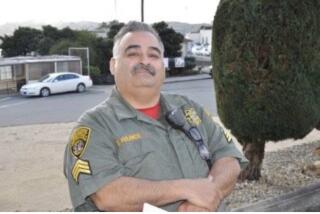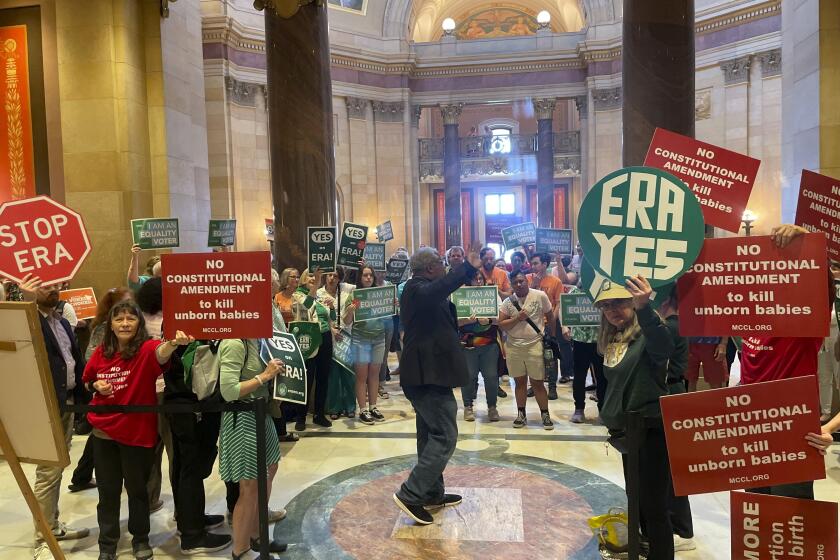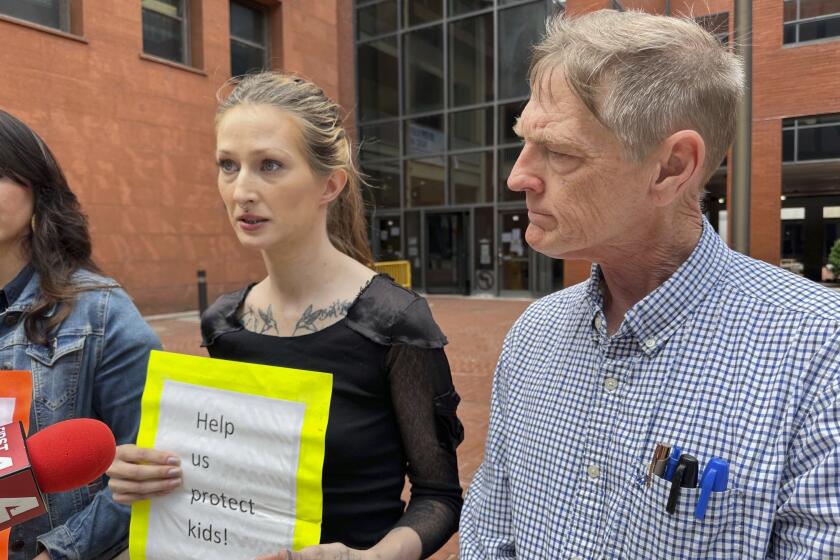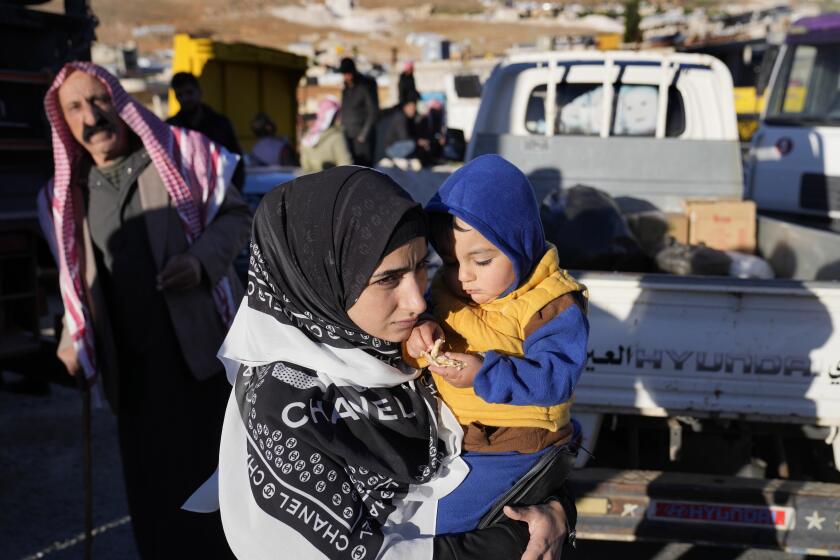Miners Race a Fireball to Help Co-Workers
Gas was slowly gathering in the mine’s Four Section. Half an hour after the first explosion, it was once again a powder keg.
By now, three miners from a neighboring work area had made their way to Four Section and reached Gaston Adams Jr., the lone man who had been too badly injured to walk.
Clarence “Bit” Boyd and four men who joined him along the way were in two manbuses, approaching the entrance to Four Section. Just behind them, about a quarter of a mile from the section entrance, 11 miners gathered to decide what to do.
Ricky Rose was there with seven others from his “belt crew.” Dave Blevins was there with two men he had found spraying tunnels with flame-retarding rock dust. Many miners believed that the company had been scrimping lately on fireproofing material, a charge that the company denied.
Blevins, one of the Jim Walter Resources No. 5 mine’s most respected foremen, took charge.
He sent Rose and three others to find a telephone and alert the control room that three injured men were on their way out. And he asked for volunteers to go with him to fight the fire they believed was burning in Four Section.
Immediately, three men from the belt crew jumped on the bus. Jerry Short was about to join them, but a friend stopped him. The self-rescue apparatus, which was worn on their belts and converts carbon monoxide into oxygen, wasn’t designed for firefighting, the friend said. It was meant for escape.
Leaving three miners, including Short, behind to await Rose’s return, Blevins and his three volunteers drove toward danger, Boyd’s group already on the move ahead of him. Now a dozen men were inside Four Section or approaching the entrance.
Rose had ridden about two minutes, searching for a telephone, when he bumped into a crew coming from the mine’s main production area. They needed to go help fight the fire, Rose told them. The longwall crewmen couldn’t believe what they were hearing. The control room, they said, had just ordered them to evacuate.
Rose didn’t know what to make of that. Seconds later, out of the corner of his eye, he saw dust swirling straight toward him down the tunnel.
Four Section had exploded again, 50 minutes after the first explosion, this time much more powerfully. Superheated, 2,500-degree flames barreled through the section at 900 feet per second. The blast tossed a 12-ton scoop 80 feet against a coal rib, bent 3/4-inch steel, leveled concrete ventilation walls. At the spot of ignition, it tore out a crater 50 feet long and 30 feet deep.
Eight men -- the three who had first reached Adams and Boyd’s group of five -- were hurled through the air. A 1,500-pound rock landed on Adams.
A ball of fire rushed over the eight so quickly that it barely burned them, but it consumed all the oxygen in the section.
Lying there in the darkness, in a fierce rain of debris and coal dust, all eight suffocated.
At the entrance to the section, a manbus carrying Blevins and two volunteers was blown off its tracks. A wall of compressed air, moving in front of the fireball, hurled the vehicle against a wall of coal. The manbus slammed back down with two men still inside it and Blevins beneath it, his chest crushed.
A fraction of a second later, the fireball rushed past, sucking the oxygen from the air.
The fireball rolled on through the tunnels, setting equipment afire and looking for an outlet. It found an airshaft, rocketed 2,100 feet straight up, blasted from the surface of the Earth and momentarily lighted up the evening sky.
By diverting the fireball, the shaft saved Rose’s life.
The swirling whirlwind he had seen coming through the tunnel knocked him and the seven men around him off their feet, enveloping them in a choking cloud of soot. With the dust came a sound -- the loudest thunder Rose had ever heard. It sounded, he said later, like the whole mine was falling in on him.
Around him, Rose heard men yelling to get out. He felt his way back to the manbus and flipped on the headlight switch. The soot was so thick he couldn’t tell if it was working. As others piled on, he grabbed the gas lever and raced toward the mine entrance.
A few hundred yards closer to the blast, Short and the other two men who had been waiting for Rose to return scrambled to their feet. Holding onto one another, they felt their way along the tracks in pitch darkness for 15 minutes before finding clean air.
There, they encountered a miner just arriving from another part of the mine. The control room operator had told him that a ventilation wall had fallen and sent him to help, he said. The others ordered him to go back the way he had come.
It took Rose and his group 20 minutes to reach the elevator shaft, located 3 1/2 miles from Four Section. It was 6:30 p.m., and the elevator cage was still up top.
Rose grabbed the telephone: “You got people on the bottom that’s scared to death and want to come out.”
He called three times before the cage came.
*
The mine’s trained rescue team interviewed the 19 miners who escaped to learn what they were dealing with. Of the 32 men who had been working the shift, 13 were still inside.
About 8 p.m., rescuers entered the mine and moved cautiously through the tunnels toward Four Section. They found Raymond Ashworth, Blevins’ third volunteer, near the section entrance. He was conscious but burned from the top of his head to the soles of his feet.
At 11:30 p.m., he was evacuated from the mine and airlifted to the University of Alabama Medical Center in Birmingham. By the time his wife, Cathy, got there, he had slipped into a coma.
All she could do was ask the nurses to clean the coal dirt from his swollen tongue. The next day, he died.
At the entrance to Four Section, the searchers found the bodies of Blevins and his two other men. They stopped and took air readings. The methane concentration was high. So was carbon monoxide, indicating that the section was still burning.
The searchers were in the barrel of a gun that was primed to go off again. About 6:30 a.m., with no hope of finding more survivors, the rescue team pulled out.
That morning, the mine was flooded to put out fires raging in the tunnels. Once the fires were extinguished, the water was pumped out.
Over the next few months, searchers explored the mine piece by piece. Working in short shifts to avoid heat exhaustion, they would creep along a few hundred feet, halt and build a temporary seal so they could ventilate the section. Then they would explore another few hundred feet, stop and do the same thing.
On Nov. 2, more than five weeks after the explosion, searchers recovered three bodies at the entrance to Four Section. Six days later, the last nine bodies were found.
*
The mine reopened in mid-December, an early Christmas present for workers who’d been sitting home for nearly three months.
The federal Mine Safety and Health Administration cited the company last week for 27 violations, eight of which contributed to the accident and the deaths. One of the worst, the agency said, was failing to start evacuating the mine after the initial explosion.
Jim Walter Resources executives refused to comment.
Earlier, the agency admonished Jim Walter Resources for having “no responsible person who took control of the situation” during the accident. The agency also declared the mine’s firefighting plan inadequate.
Although federal law requires that firefighting and evacuation be simulated every 90 days, several miners interviewed recently were hard-pressed to recall an evacuation drill and said firefighting drills were usually limited to a foreman running through a checklist.
The mine’s firefighting plan has been revised with an emphasis on improving coordination from the control room.
In recent months, the mine has been cited for numerous violations, including accumulations of coal dust, ventilation problems and inadequate roof support.
The Bush administration’s new budget calls for a 5% cut in funding for MSHA’s coal mine enforcement. Experts say that could mean fewer inspectors.
In September, a thousand miners, family members and company officials marked the one-year anniversary of the accident by erecting a memorial.
Among those who perished, Blevins has been singled out perhaps more than any other as the embodiment of courage. His tombstone in a Tuscaloosa cemetery is inscribed: “Son, Husband, Father, Grandfather and Hero of JWR 5 Mine Explosion.”
His son, Dave Jr., who worked at neighboring No. 7 mine, has led the drive to make the mine owner pay.
He’s a natural leader, just like his dad. Ten of the 13 families that lost breadwinners have filed wrongful death lawsuits against the company, alleging negligence.
Jim Walter Resources denies that it was negligent and characterizes the accident as unforeseeable.
The company says the miners who were killed and injured understood the risks but chose to follow their creed and go to the aid of their brothers.
Of the three men injured in the first explosion, only Tony Key has returned to work underground -- over his wife’s objections. He wanted to prove to himself that he could do it.
Michael McIe, the man who led Key to safety, spends his days tramping through the woods, under doctor’s orders to do something that gives him peace. Troubled by nightmares, he is on anti-anxiety medication.
Ricky Rose, the miner who prayed as he headed toward Four Section after the first explosion, is back underground. It’s the only work he knows. But he asked to be taken off the belt crew, which lost three men.
After the mine reopened, he went to the spot where their bodies were found, knelt in the coal dust and wept.
*
(BEGIN TEXT OF INFOBOX)
THE STORY SO FAR
Miners know what underground fires and gas explosions can do; the annals of mining abound with tragic examples. But when a gas explosion ripped through an underground tunnel, injuring three men, other miners working that day in America’s deepest vertical-shaft coal mine did not flee. Like New York City police and firefighters on Sept. 11, the miners raced not from danger but toward it.
How This Story Was Reported
The story of the accident at Jim Walter Resources No. 5 mine is based on interviews with eight miners who survived; another half-dozen current or former employees of the No. 5 mine; relatives of five miners who died; two members of the Alabama state mine rescue team; members of the United Mine Workers of America safety committees at several Alabama mines; UMWA safety director Joe Main; UMWA health and safety representative Tom Wilson; Jim Walter Resources spokesmen in Brookwood, Ala., and Tampa, Fla.; Assistant Secretary of Labor David Lauriski; federal Mine Safety and Health Administration spokesman Rodney Brown; and mining-industry experts. It also drew on depositions given to MSHA during its investigation and on six years of federal safety citations against Jim Walter Resources No. 5, which were obtained from MSHA under the Freedom of Information Act.
The Mine’s Toll
The casualty list for the Brookwood mine accident:
Died in the mine:
Gaston Adams Jr., 56, Bessemer, Ala.
Nelson Banks, 52, Bessemer, Ala.
Dave Blevins, 52, Tuscaloosa, Ala.
Clarence “Bit” Boyd, 52, Bessemer, Ala.
Wendell Johnson, 52, Cottondale, Ala.
John Knox, 44, Pleasant Grove, Ala.
Dennis Mobley, 56, Brent, Ala.
Charles Nail, 59, Birmingham, Ala.
Joe Riggs, 51, Cottondale, Ala.
Charles Smith, 44, Brookwood, Ala.
Joe Sorah, 46, Duncanville, Ala.
Terry Stewart, 44, Cordova, Ala.
Died in the hospital:
Raymond Ashworth, 53, Cottondale, Ala.
Recovered from injuries:
Tony Key, 49, Tuscaloosa, Ala., lacerations, bruises and contusions; returned to work underground.
Michael McIe, 42, Brookwood, Ala., broken ribs, lacerations, second-degree burns; not working.
Skip Palmer, 48, Brookwood, Ala., lacerations, bruises and contusions; not working.
From Associated Press
More to Read
Start your day right
Sign up for Essential California for news, features and recommendations from the L.A. Times and beyond in your inbox six days a week.
You may occasionally receive promotional content from the Los Angeles Times.





